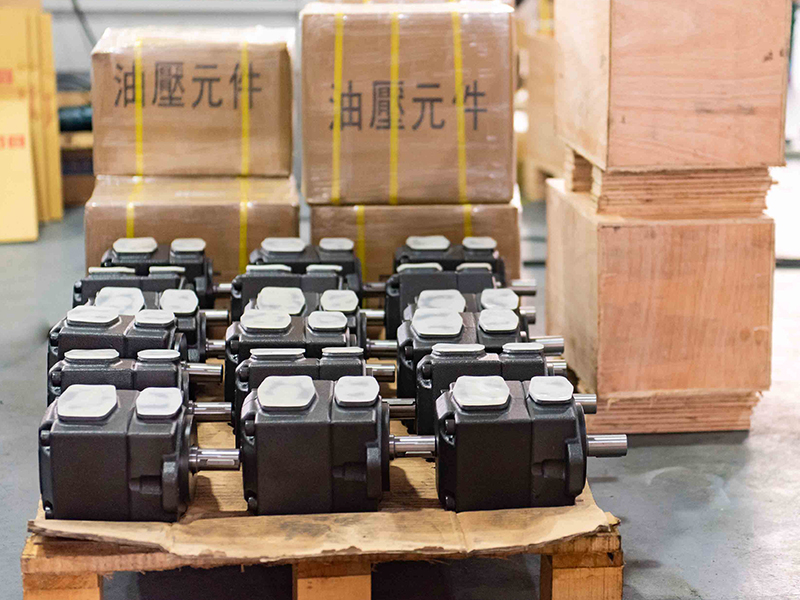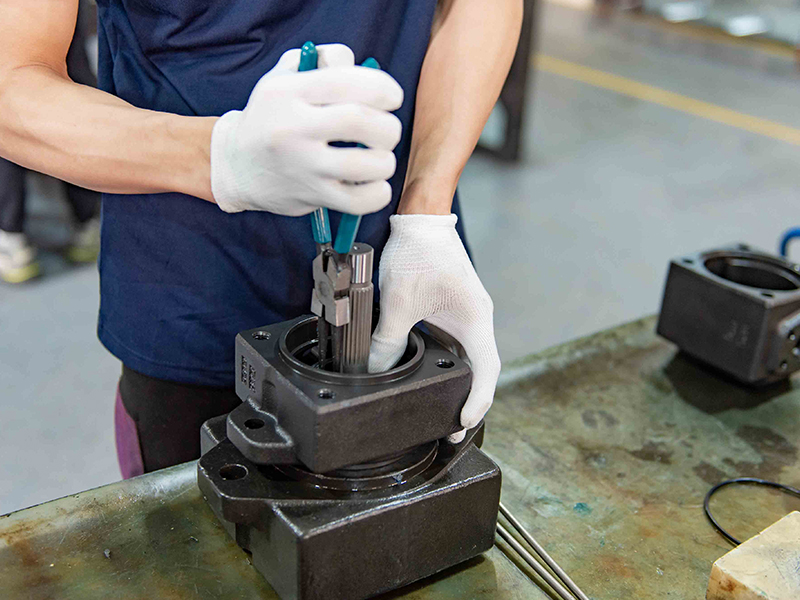Common faults of vane pump and discharge methods
What are the common faults and troubleshooting methods of vane pump?

A- Insufficient flow. See Table 1-6 for reasons of insufficient flow rate of vane pump and its elimination methods.
Table 1-6 Causes and elimination methods of insufficient flow of vane pump
Faults and Causes | Solutions |
The screw at the top cover is loose, the axial clearance increases and the volumetric efficiency decreases. | Tighten the screws properly to ensure even and proper clearance (the clearance is 0.04~0.07 mm). |
Individual blades slide inflexible. | Cleaning. When it is still not flexible after cleaning, it should be deployed in a single tank. |
The inner surface of the cam ring is worn, and the blades can't make good contact with the inner surface of the cam ring. | The inner surface of the cam ring is generally worn at the oil suction cavity. |
The end face of the port plate is seriously worn. | replace |
The blade is installed opposite to the rotor. | Make the inclination direction of the blades consistent with the rotation direction of the rotor. |
System leakage is large. | Check the leakage of components one by one, and check whether the pressure gauge is blocked by dirt. |

B- The oil can't be sucked. See Table 1-7 for the reasons why the vane oil can't be absorbed and the troubleshooting methods.
Table 1-7 Reasons and elimination methods of oil absorption failure of vane pump
Faults and Causes | Solutions |
The oil level is too low, and the oil can't be sucked. | Check and add it to the specified oil marking line. |
The viscosity of oil is too high, which makes the blade slide inflexible in the rotor groove. | Generally use 20# hydraulic oil or 22# turbine oil. |
The end face of the oil distribution plate has poor contact with the inner plane of the shell, and the high and low pressure chambers are in collusion. | Refinish the end face of oil distribution plate |
There are sand holes in the pump body, and the high and low pressure chambers are connected. | replace |
The motor turns backwards. | correct |

C- The noise of the pump is too large. See Table 1-8 for the causes and elimination methods of excessive noise of the pump.
Table 1-8 Causes and elimination methods of excessive noise of pump
Faults and Causes | Solutions |
The oil filter is blocked and the oil absorption is not smooth. | Wash |
Air leakage at suction end | Check the oil suction pipe joints one by one by applying butter, and tighten the joints if the noise is reduced. Or directly observe whether bubbles appear at the oil return port. |
Wear of pump end seal | Grease the oil seal at the shaft end, and replace the oil seal if the noise is reduced. |
The pump cover screw is loose due to vibration. | Grease the joint of the screws, and tighten the screws if the noise is low. |
Not concentric with the pump motor shaft | Re-adjust to be concentric |
The two sides of the blade groove of the rotor are not perpendicular to its two end faces. | Replace rotor |
The unloading triangular groove of oil distribution pan is too short. | Use assorted file to modify it properly, so that when the previous blade passes through the unloading groove, the latter blade has been separated from the oil suction cavity. |
The seal at the shaft end of spline groove is too tight (hot) | Adjust and replace appropriately. |
| The pump speed is too high. | Use at specified speed. |
The oil suction of the oil pump is insufficient | Check the oil level. |
Serious pollution of hydraulic oil | Remove the oil filter, check whether the oil filter is damaged, whether there is more solid adsorption, and replace the oil filter and hydraulic oil. |
Pressure pendulum | Check the wear of the valve core of the pump core total pressure valve. |
